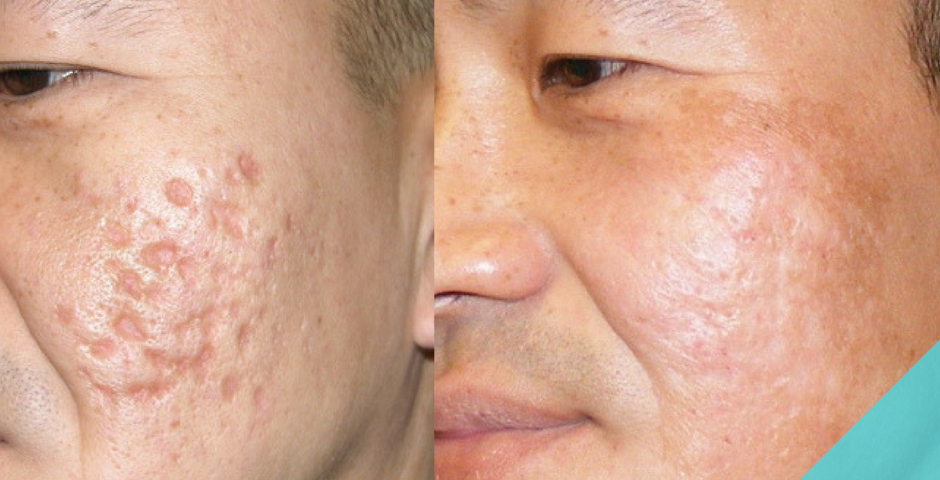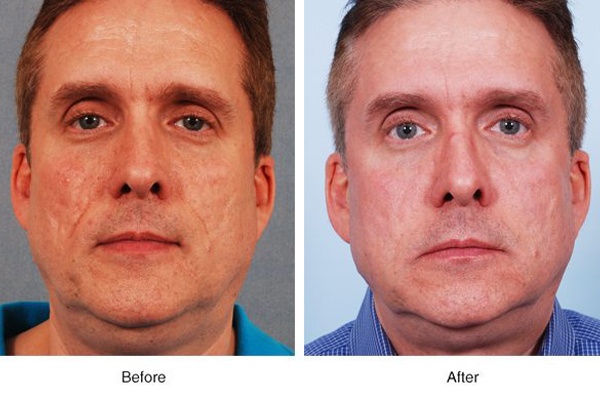Expert Acne and Acne Scars Treatment: Long-Lasting Outcomes for More Clear Skin
Expert Acne and Acne Scars Treatment: Long-Lasting Outcomes for More Clear Skin
Blog Article
Understanding the Various Skin Disease and Effective Treatment Choices for Acne Scars
Acne marks stand for a complex interaction of skin conditions that substantially influence people' self-confidence and total skin health. As we explore the landscape of acne scar management, it comes to be apparent that the trip towards more clear skin may include even more than just topical solutions.
Sorts Of Acne Scars
Acne scars can materialize in various kinds, each needing specific treatment strategies. The two main categories of acne scars are hypertrophic and atrophic scars. Atrophic scars are characterized by a loss of cells, causing clinically depressed locations on the skin. These scars are more identified right into three subtypes: ice pick scars, which are deep and slim; boxcar scars, which are bigger and have well-defined edges; and rolling scars, which create a wave-like look because of uneven skin texture.
In contrast, hypertrophic scars arise from an overflow of collagen throughout the recovery procedure, causing elevated locations on the skin. These marks are frequently strong and can vary in color, sometimes appearing red or darker than the bordering skin.

Reasons of Acne Scarring
Marking takes place as an outcome of the body's natural recovery response to swelling and injury triggered by acne sores. When acne types, it causes an inflammatory feedback, resulting in the launch of various cytokines and development factors that promote healing. This procedure can sometimes lead to extreme cells development or poor repair work, resulting in marks.
The primary sources of acne scarring consist of the seriousness of the acne itself, duration of the sores, and specific skin kinds. Serious inflammatory acne, such as cysts and blemishes, is a lot more likely to lead to scarring as a result of deeper cells damage. Additionally, improper handling of acne sores, such as choosing or squeezing, can worsen cells injury and swelling, raising the probability of scarring.
Genetic predisposition additionally plays a considerable duty; individuals with a family history of scarring go to a greater threat. Skin kind and color can affect mark formation, as darker skin tones might experience post-inflammatory hyperpigmentation, while lighter skin may create atrophic marks.

Therapy Options for Scarring
Effective therapy choices for acne scarring differ relying on the kind and extent of the scars. Normally categorized right into atrophic, hypertrophic, and keloid marks, these conditions call for customized strategies for optimal outcomes.
For atrophic scars, which are defined by a loss of tissue, treatments such as chemical peels, microdermabrasion, and laser therapy are commonly used. These approaches promote skin revival and stimulate collagen manufacturing, consequently enhancing skin structure. Subcision, a minimally intrusive procedure, can also work by separating coarse bands under the skin.
Hypertrophic and keloid scars can be much more testing to deal with. Alternatives consist of corticosteroid shots to reduce inflammation and squash the scars. acne and acne scars treatment. In many cases, cryotherapy or laser treatment might be suggested to reduce their look
Surgical alternatives are offered for extreme scarring, where excision or skin grafting might be needed. It's important for individuals to consult with a dermatologist to assess their certain scar kind and go over the most ideal therapy plan. Integrating several therapies often yields the very best end results, making sure that each individual's unique skin problem is addressed properly.
Home Treatments and Natural Solutions
All-natural services and natural home remedy can supply an available technique for individuals looking for to improve the look of acne scars. Different ingredients located in the home kitchen area have actually demonstrated prospective advantages in improving skin texture and promoting recovery.
One preferred remedy is aloe vera, recognized for its anti-inflammatory and comforting residential properties. Using fresh aloe vera gel directly onto the scars can aid enhance skin hydration and lower redness. Honey possesses natural antibacterial and moisturizing high qualities that can assist in scar healing. It can be used as a mask, left on for thirty minutes before rinsing.
One more effective option is lemon juice, which functions as an all-natural exfoliant and can lighten hyperpigmentation. Nonetheless, it ought to be made use of carefully, as it might trigger photosensitivity. Oat meal masks are also useful; their mild exfoliation can help remove dead skin cells while calming irritation.
Important oils, such as tea tree oil and lavender oil, can further sustain scar recovery due to their antimicrobial homes. It is critical to carry out a blog patch test before using any kind of solution to make certain there are no damaging reactions. These natural services can be a complementary method in the journey to diminish acne scars.
Preventing Future Scarring
Adopting an aggressive approach to skin care can considerably decrease the threat of creating future acne scars. Among the crucial strategies is to handle acne efficiently as it develops (acne and acne scars treatment). This involves making use of non-comedogenic skincare products and medications recommended by skin doctors that target acne without irritating the skin. More Help Routine cleaning, exfoliation, and hydration can aid keep skin health and wellness and avoid clogged up pores.
Additionally, preventing the lure to pick or press acne sores is vital, as this can bring about swelling and succeeding scarring. Rather, individuals should concentrate on applying topical therapies that advertise recovery and minimize swelling. Active ingredients such as salicylic acid, benzoyl peroxide, and retinoids are recognized for their efficiency in taking care of acne and lessening marks.

Lastly, keeping a healthy and balanced diet regimen abundant in anti-oxidants and staying moisturized assistances skin regeneration. By implementing these precautionary actions, individuals can substantially reduce their threat of future scarring and promote general skin wellness.
Final Thought
Finally, a comprehensive understanding of acne marks, incorporating both atrophic and hypertrophic kinds, is important for effective treatment strategies. Customized interventions, consisting of professional treatments and natural home remedy, can considerably enhance skin appearance and texture. Safety nets additionally play an essential function in minimizing future scarring. Appointment with a skin doctor stays critical to create personalized techniques that consider private skin types and scar explanation extent, eventually improving the efficiency of mark management strategies.
Acne scars stand for an intricate interplay of skin problems that considerably impact individuals' self-confidence and overall skin health and wellness. The two primary categories of acne marks are hypertrophic and atrophic marks. These scars are further classified into three subtypes: ice pick marks, which are slim and deep; boxcar marks, which are broader and have distinct edges; and rolling scars, which produce a wave-like appearance due to irregular skin appearance.
A thorough consultation with a skin specialist can help determine the most appropriate intervention, taking into account the person's skin type, scar intensity, and total skin health.
Assessment with a skin doctor continues to be important to devise individualized strategies that consider private skin types and mark extent, inevitably enhancing the efficiency of mark management methods.
Report this page